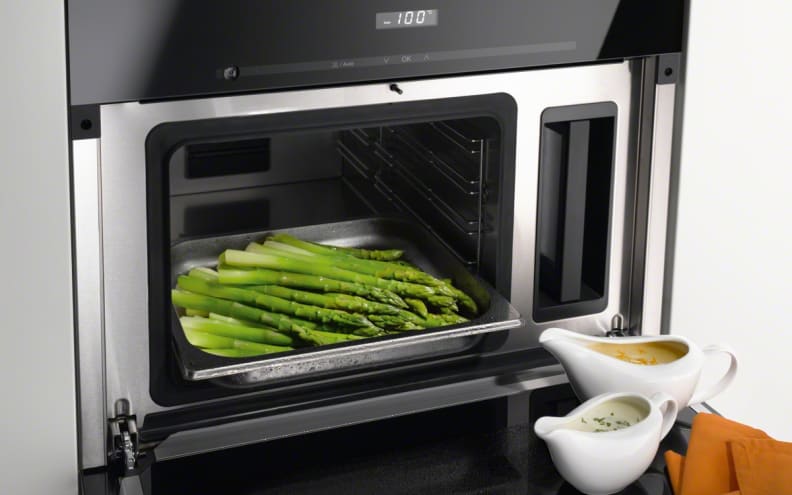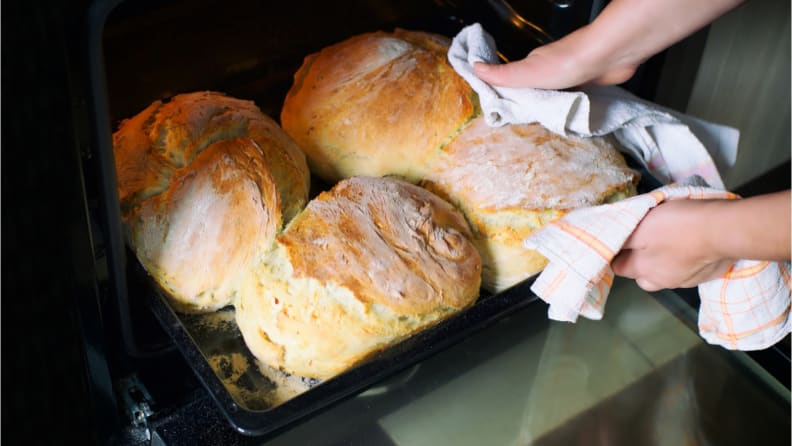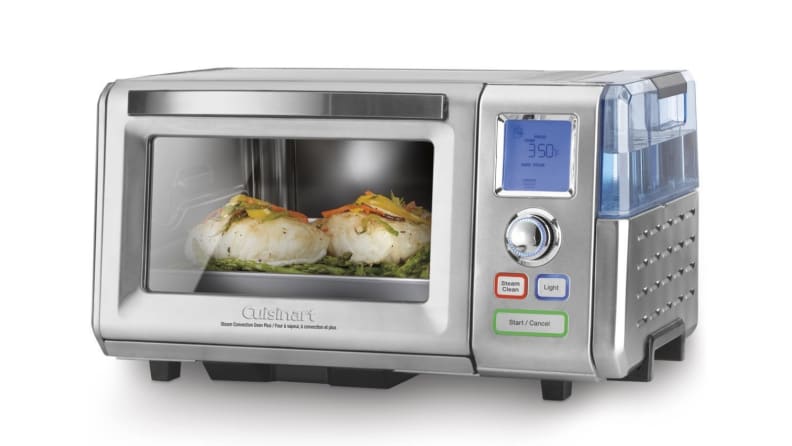This device is the secret weapon to making healthier food, faster
Throw out your microwave, there's a newcomer in town: steam.
 Credit:
Williams Sonoma / Getty / VeselovaElena
Credit:
Williams Sonoma / Getty / VeselovaElena
Recommendations are independently chosen by Reviewed's editors. Purchases made through the links below may earn us and our publishing partners a commission. Prices were accurate at the time this article was published but may change over time.
While cooking tech gets better all the time, your basic home oven hasn't changed much over the years. Sure, we’ve seen new ideas like the addition of air fryers and single ovens that can be split in two, but at the end of the day, an oven is still a box with a heating element inside. It uses gas or electricity to heat the air in the oven. Simple.
Unless it cooks your food with steam, that is.
Professional chefs and bakers have been using steam ovens for years, but they've only recently started to gain traction in home kitchens. Manufacturers like Bosch, Miele, and Thermador all have models of their own, indicating this is more than just a passing fad.
What's a steam oven?

As the name suggests, steam ovens use steam (instead of simply heat) to cook your food. While conventional ovens can dry out food, with steam ovens, moisture is never in short supply.
Most models contain a reservoir that you manually fill with water, though some higher-end models hook right into a water line. When you turn on the oven, the heat converts the water into steam, which cooks your food.
Some steam ovens can only cook with steam, but combo-steam ovens—also known as steam convection ovens—can also cook with convection. Sometimes these can function entirely without steam, but it depends on the model.
Why bother cooking with steam?

Both heat and humidity have a significant effect on cooking. As Scott Heimendinger, Modernist Cuisine’s director of applied research, explains, water molecules conduct heat more efficiently than regular old air. Thus, adding steam to the mix results in a quicker cook.
And that’s not the only benefit. The humidity in the oven helps prevent the water in your food from evaporating, which in turn keeps it from drying out. This means juicier chicken, flakier pastries, and better bread. It also means you can make foods like rice or steamed veggies that would typically never see the inside of an oven, or reheat leftovers without robbing them of moisture.
Steam ovens can't do everything, of course. They aren't useful for browning meat, for example. It’s no problem if you have a combo-steam oven—you can just finish your roast off with the convection setting—but if you only have a steam setting, you may want to finish it off with a quick pan sear.
Additionally, steam cooking can make it easier to cook healthy food, because you're not using things like oil to heat your food. Of course, you can cook plenty of unhealthy things in a steam oven, but it's all about moderation.
Which models are best?

So, is it time to run out and replace your regular oven? Probably not. You’ll still want a workhorse that can crisp potatoes or accomodate a whole Thanksgiving bird. However, if you have a microwave that only ever gets used for leftovers and those frozen steam-in-the-bag vegetable packs, then a countertop steam oven is an awesome alternative.
Though some imported Japanese models have gained traction, the most popular countertop steam oven that we recommend is the Cuisinart CSO-300N1. It's a combination steam and convection oven that is well-reviewed by users and costs under $200.
If you are looking for a steam wall oven to add to a high-end kitchen, there are a few models to choose from. Thermodor, Miele, Wolf, Gaggenau, and Bosch all have had steam and combo-steam ovens in the past few years. Prices on these wall ovens can run from $3,000 to $8,000, so these are definitely high-end luxuries if you don't want to go the countertop route.
There are also other options if you don't want an appliance entirely dedicated to steam. You could try a regular oven that’s equipped with a steam rack, like the KitchenAid KSDB900ES. It doesn't produce quite the same results as a dedicated steam oven, but it does let you reap some of the benefits when you’re baking.



